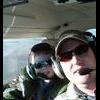Fuel Tanks?
-
Members Online
- MikeOH
- Andy95W
- eman1200
- ta2too
- Sabremech
- haymak3r
- Teddyhherrera
- 47U
- Rwsavory
- TCC
- chrisburdzy98
- jlunseth
- 1980Mooney
- dzeleski
- Jay67F
- Lax291
- Marc_B
- AndreiC
- ELysek1
- Rocket_Driver
- aviatoreb
- FoxMike
- acekng1
- gdwinc
- 201Mooniac
- LANCECASPER
- alexz
- Igor_U
- M20F
- kaba
- Marcopolo
- Guy123
- Skyland
- varlajo
- DanM20C
- ElkoRandy20J
- PeterRus
- Ragsf15e
- warren.huisman
- atpdave
- PT20J
- hazek
- ProtoFly


Recommended Posts
Join the conversation
You can post now and register later. If you have an account, sign in now to post with your account.